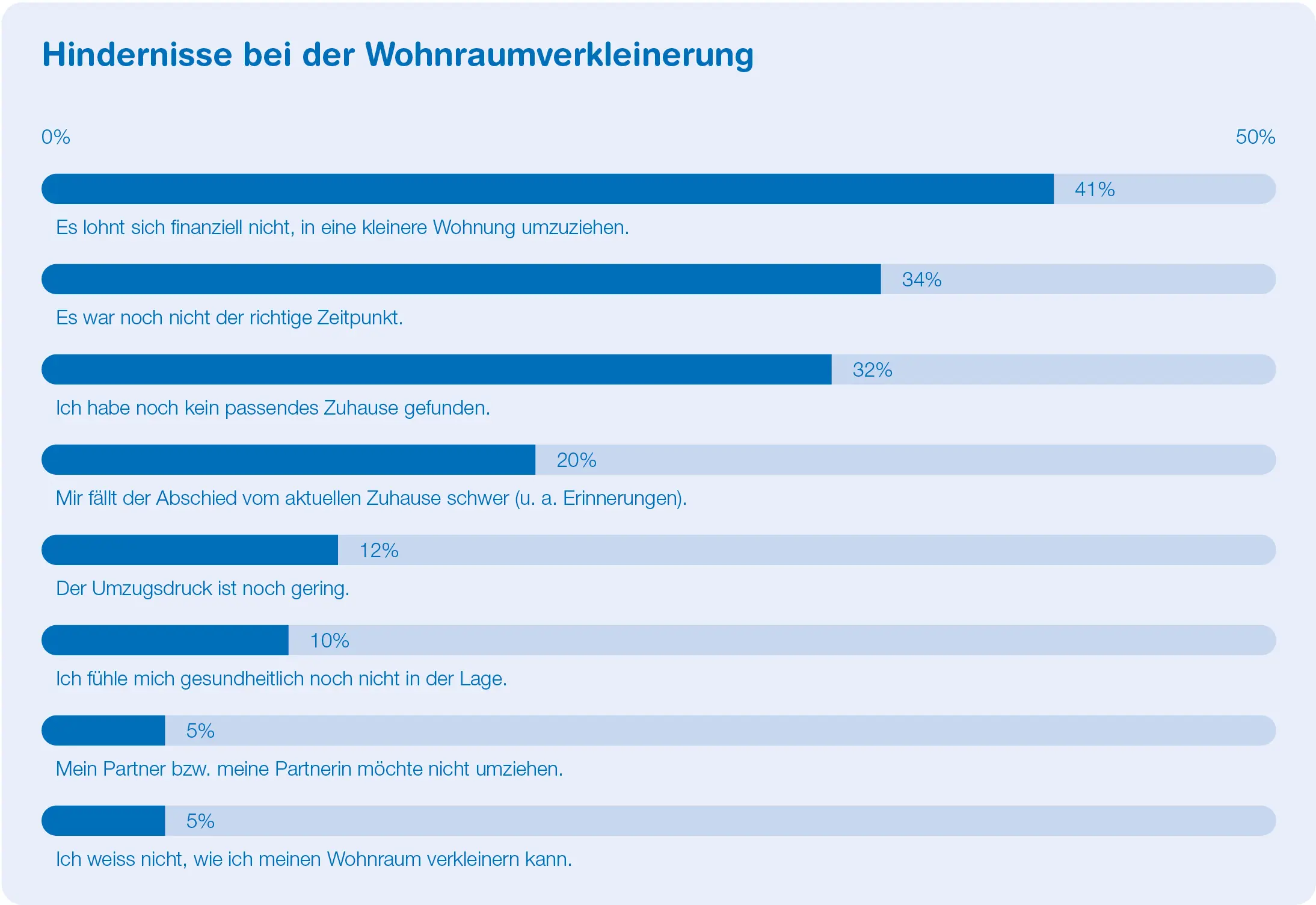Downsizing remains a challenge for empty nesters
Parents whose children have grown up and left home have the greatest potential for downsizing their living space. However, this potential is only exploited to a limited extent, according to a ZHAW study.
The potential to downsize their living space is greatest for so-called empty nesters, that is, people whose children have already moved out. According to a ZHAW study, 26 percent of respondents feel that their home is too big, and 38 percent of empty nesters surveyed say they have more than two rooms they don’t need. When empty nesters own their homes, this figure even rises to 61 percent. In general, two more rooms than the number of people living in the household is considered the ideal size for homes.
Pressure to move more likely if flats are too small
However, empty nesters only make limited use of their downsizing potential. People are more likely to feel pressured into moving if their flats are too small than when their homes are too large. Social pressure is also in short supply, with only one in three people surveyed thinking that older couples or single people in larger homes should give up their living space to make way for younger families. In addition, people who’d be willing to move into smaller flats are discouraged from doing so by financial deterrents. The new rent for smaller flats, for example, is often higher than the existing rent for a larger one where tenants have been living for a long time. “It seems that the combination of relocating and downsizing – two huge life events happening at the same time – is particularly challenging,” says Selina Lehner, who co-led the study. “If the necessary incentives are also missing, people often put off thinking about a move.”
Link to the study “Wohnraumnutzung aus individueller Sicht” (available in German only)
